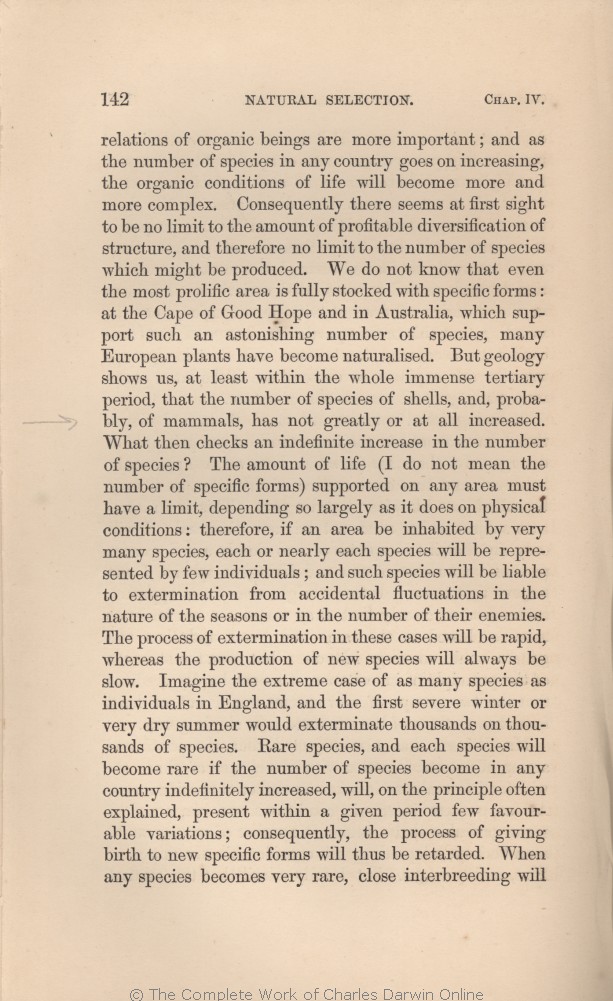relations of organic beings are more important; and as the number of species in
any | any 1861 1869 1872 | any 1866 |
| country 1861 1869 1872 | | anycountry 1866 |
| will 1861 | | must 1872 | will 1866 1869 |
| to be 1861 | to be 1866 1869 1872 |
| at least within the whole immense 1861 |
| that from an early part of the long 1866 1869 |
| that from an early part of the 1872 |
| period, 1861 | | period 1866 1869 1872 |
| that 1861 | that 1866 1869 1872 |
| and, 1861 | | and 1866 1869 1872 |
| probably, 1861 |
| that from the middle part of this same period the number 1866 1869 1872 |
| any 1861 1866 1869 | | an 1872 |
| conditions: 1861 | | conditions; 1866 1869 1872 |
| these 1861 1866 1869 | | such 1872 |
| will 1861 1866 1869 | | would 1872 |
| will 1861 | | must 1866 1869 1872 |
| slow. 1861 1872 | | sloW. 1866 1869 |
| become in any country 1861 1866 |
| in any country becomes 1869 1872 |
| favourable 1861 1866 1869 | | favorable 1872 |
| will 1861 1866 1869 | | would 1872 |
|









